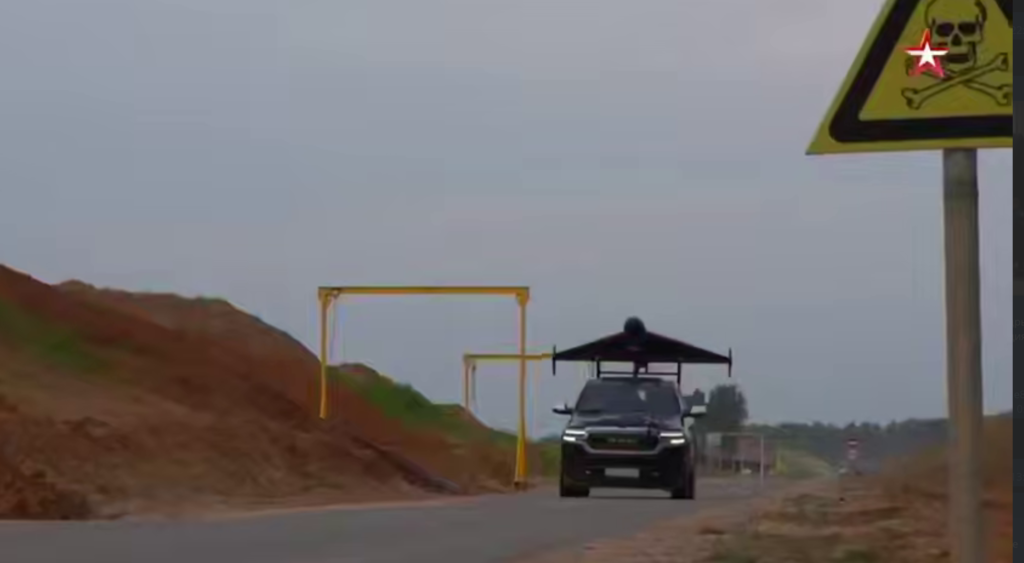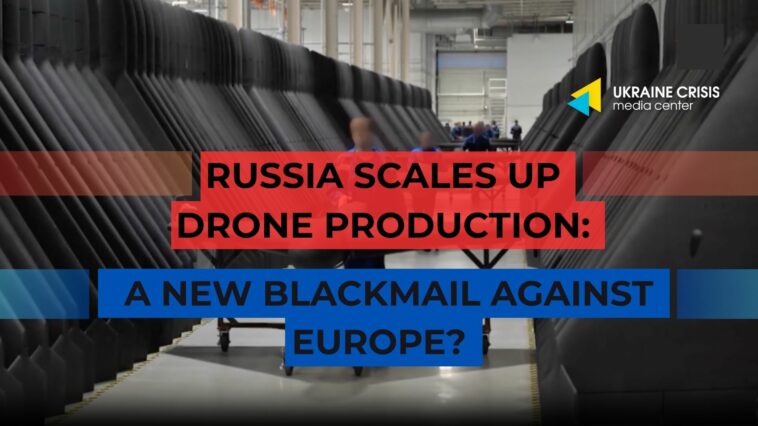In July 2025, Ukraine was attacked by 6,300 Shahed-type and decoy drones. Against this backdrop, there is growing concern over Russia’s plans to scale up the production of tactical-operational UAVs. According to Ukrainian intelligence, Moscow intends to produce around 40,000 Shahed/Geran-2 loitering munitions and 24,000 decoys (known as “Gerbera”) this year. In the near term, Russia aims to reach a production capacity of 6,000 such units per month.
In addition, Russia is actively developing and modernizing Iranian drones. Due to recent tactical changes, Russian UAVs now operate at higher altitudes and speeds, making them significantly harder to intercept. For example, in recent weeks, Russian forces have increasingly used the “Geran-3” modification with a turbine engine, capable of accelerating to 800 km/h during the final stage of flight – posing serious challenges to Ukraine’s air defense systems.
The largest production hub for Russian Shahed-family drones is the Alabuga Special Economic Zone in Tatarstan, RF. Russia is currently building new facilities and dormitories to accommodate a larger workforce. According to Western analysts, once construction of the dormitory complex is completed, the number of workers will reach approximately 40,000. It is also reported that Russia plans to bring in around 25,000 laborers from North Korea.

the construction of new residential and industrial premises has been recorded

It is significant that the company’s management uses images of historical figures to ideologically “encourage” its staff.

It is telling that internal Russian propaganda imitates Soviet-style rhetoric, adapting it to the vocabulary of Putin’s era. Examples of propaganda posters on the walls of a drone manufacturing plant in Alabuga:

“For the Motherland, for Quality, for Import Substitution!”

However, the main motivation for Russians, of course, is the financial aspect. Despite rumors about plans to bring in a significant number of workers from North Korea, advertisements for jobs at drone production facilities in Alabuga are currently circulating on Russian social media. The conditions are quite attractive, especially for residents of Russia’s peripheral regions. Even without prior work experience, after completing 2–3 months of training, a newly recruited operator will receive 130,000 rubles (about USD 1,600 as of late July this year). With additional experience, one can expect a salary almost comparable to the payments received by Russian contract soldiers fighting on the frontlines in Ukraine. Moreover, the company covers relocation to Alabuga and offers favorable living conditions.

Alongside its war of aggression against Ukraine, Russia is building an arsenal of threats that could potentially be directed against European countries. This raises serious questions about NATO’s ability to deliver a proportionate response to the risks generated by Russia.
At present, there is a prevailing belief among European political elites and the expert community that as long as Russia is waging war against Ukraine, Moscow will not open second front in Europe. However, current trends within Russia’s military-industrial complex suggest that the Kremlin is not planning to wait until the war against Ukraine is over.

and predict the direction of the strike
Despite the gradual increase in the number of drones Russia launches against Ukraine, the Kremlin is also stockpiling UAVs that could potentially be directed at Europe. In this context, it is worth noting that most European countries lack adequate experience in countering drone threats. There is also an objective shortage of air defense systems capable of repelling hundreds or even thousands of drones launched simultaneously or over the course of several days.
At the same time, what may prove most significant in the Kremlin’s calculations is the psychological unpreparedness of European societies for drone attacks on civilian infrastructure and death of fellow citizens. It is reasonable to assume that Russia may resort to blackmail targeting the Baltic or Scandinavian countries even before the active phase of the war in Ukraine ends. Even without actual drone strikes, an information and psychological operation, accompanied by threats and visible preparations for a mass UAV launch into NATO airspace, could undermine trust within the Alliance.
Ukrainian drones, which regularly strike facilities of Russia’s military-industrial complex, including in Alabuga, are structurally limited in their destructive capacity and thus unable to significantly affect production rates. Likewise, sabotage efforts have limited impact, given that industrial facilities in Alabuga are well protected and dispersed. Finally, attempts to block the supply of Western components to the Russian arms industry have proven ineffective amid continued flows of components from China..
Under these circumstances, the only effective way to deprive Moscow of its ability to terrorize Ukraine’s rear and project military threats against European countries is through the destruction of its industrial capabilities via missile strikes. Ukraine is currently developing its own ballistic systems capable of hitting targets deep within Russian territory. However, since the threat of Russia’s hybrid aggression involving drone blackmail constitutes a pan-European challenge, this issue cannot be viewed solely within the context of the war against Ukraine. A stronger and more coordinated NATO-level response is required to deter Moscow’s drone development efforts.
Volodymyr Solovian



